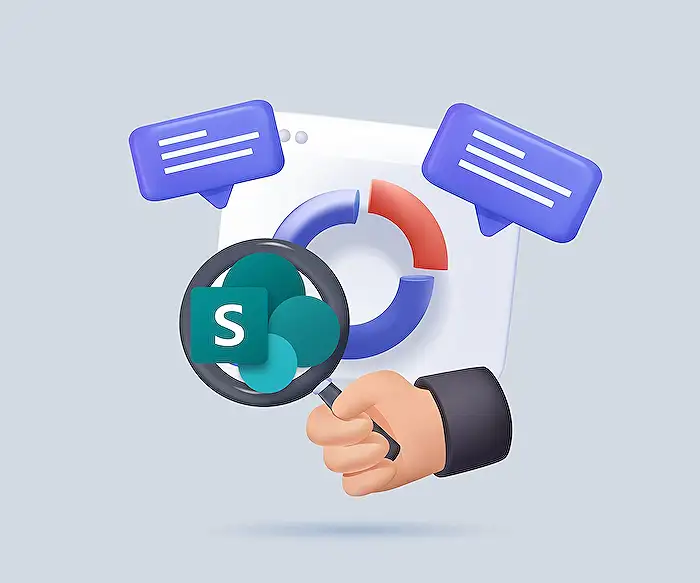
How to Migrate from Power Automate Cloud to Copilot Studio Agent Flows
Lead Infrastructure Engineer / Vice President | Microsoft MCT & MVP | Speaker & Blogger
Power Automate Copilot Studio Agent Flows Migration Key Themes: Agents, AgentFlow, CloudFlow Microsoft Products: Power Automate
Key insights
- Power Automate is a cloud-based platform that automates workflows between different applications and services, while Copilot Studio uses AI to make automation smarter and more efficient.
- Copilot Studio Agent Flows allow for enhanced automation by connecting multiple actions, making workflows flexible and reducing manual work through AI-driven decision making.
- The migration process involves selecting existing Power Automate flows, understanding Copilot Studio's features, and integrating these flows into a new Copilot Studio agent.
- Governance and Security are improved with Copilot Studio, offering features like activity auditing and integration with Microsoft Purview and Sentinel for better control.
- The 2025 updates introduce better integration with Microsoft 365 Copilot, improved builder tools in Copilot Studio, and the ability to publish custom agents on new channels such as WhatsApp and SharePoint.
- Migrating to Copilot Studio Agent Flows increases productivity by using AI for task automation, supports customization, and makes managing workflows easier for organizations.
Introduction: Evolving Automation with Microsoft Tools
The landscape of business automation is rapidly changing, and Microsoft's suite of tools continues to play a central role in this transformation. In a recent YouTube video by Daniel Christian [MVP], viewers are guided through the process of migrating from Power Automate Cloud flows to Copilot Studio Agent Flows. This migration is not just a technical update—it represents a shift toward more dynamic, AI-driven automation. As organizations seek greater efficiency and flexibility, understanding the differences and tradeoffs between these platforms becomes critical.
This article summarizes the key points from Christian’s video, breaking down the benefits, challenges, and new capabilities introduced by Copilot Studio. By examining the migration process and its implications, we aim to provide readers with an objective overview that balances both the promise and complexity of Microsoft’s latest automation solutions.
Understanding Power Automate and Copilot Studio
Power Automate, previously known as Microsoft Flow, is a well-established cloud-based service designed for automating workflows across a variety of applications and services. Its strength lies in connecting disparate systems, allowing users to create flows that handle repetitive tasks with minimal manual input. However, as automation needs have evolved, so too has Microsoft’s approach.
Copilot Studio introduces a new layer of intelligence by leveraging advanced AI models. Unlike traditional flows, Copilot Studio Agent Flows can interpret user intent, adapt to changing inputs, and autonomously determine the best sequence of actions to achieve a desired outcome. This makes Copilot Studio especially valuable for scenarios that require more than just straightforward automation, such as responding to dynamic user requests or managing complex, multi-step processes.
Key Advantages: Moving Beyond Traditional Automation
Migrating to Copilot Studio Agent Flows brings several notable advantages. First and foremost, the platform’s AI-driven decision making allows for smarter, context-aware automation. By understanding the “why” behind each task, Copilot Studio can link multiple actions together, reducing the time and effort needed to build complex workflows. This results in greater flexibility and efficiency compared to static, rule-based flows.
In addition to improved automation, Copilot Studio emphasizes governance and security. Features such as end-user activity auditing and integration with Microsoft Purview and Sentinel help organizations maintain compliance and monitor usage. Moreover, the ability to customize and scale Copilot agents enables businesses to tailor solutions to their specific needs, whether deploying agents across new channels or upgrading their capabilities over time.
The Migration Process: Steps and Considerations
Transitioning from Power Automate Cloud to Copilot Studio Agent Flows involves several important steps. Initially, organizations must identify which existing flows are suitable for migration. This requires a careful assessment of current workflows to ensure compatibility with Copilot Studio’s features. Next, users should become familiar with Copilot Studio’s interface and capabilities, as it introduces new ways to design and manage agent flows.
The actual migration process typically involves creating a new Copilot Studio agent and integrating existing Power Automate flows into this environment. While this can unlock significant benefits, it also presents challenges—particularly for teams that must adapt to new design paradigms or retrain staff. Balancing the immediate learning curve against the long-term gains of smarter automation is a key consideration for decision-makers.
New Capabilities and Emerging Challenges
One of the most exciting aspects of Copilot Studio is its continuous evolution. The latest updates, including those from the 2025 release wave 1, have introduced enhanced integration with Microsoft 365 Copilot, improved builder capabilities, and support for new conversational channels like WhatsApp and SharePoint. These features expand the reach and functionality of automated agents, enabling broader deployment and more sophisticated interactions.
However, embracing these innovations also introduces new challenges. For instance, ensuring consistent governance across multiple platforms, managing security in more complex environments, and keeping pace with rapid technological change all require careful planning. Organizations must weigh the benefits of advanced automation against the added complexity and resource demands that come with adopting cutting-edge tools.
Conclusion: Navigating the Future of Automation
Daniel Christian’s video offers a timely and practical guide for organizations considering a move from Power Automate Cloud to Copilot Studio Agent Flows. As Microsoft pushes the boundaries of what’s possible with AI-powered automation, businesses are presented with both new opportunities and fresh challenges. By understanding the migration process, evaluating the tradeoffs, and preparing for ongoing changes, organizations can position themselves to take full advantage of these powerful technologies while minimizing potential risks.
Ultimately, the shift toward intelligent agent flows marks an important step forward in the journey toward smarter, more responsive automation—a trend that will likely shape the future of work for years to come.

Keywords
Power Automate migration Copilot Studio Agent Flows transition guide cloud to agent flows migrate Power Automate to Copilot automate workflow migration Microsoft Power Automate update Copilot integration tutorial